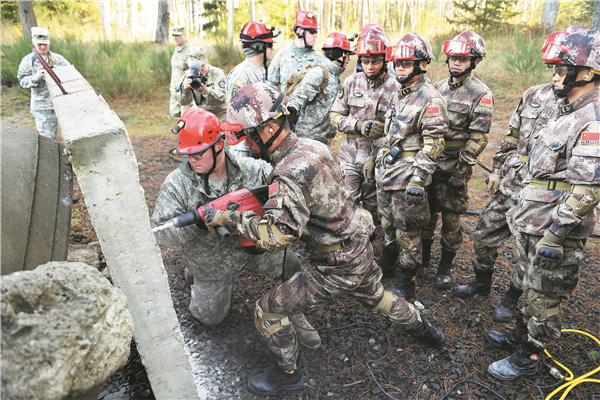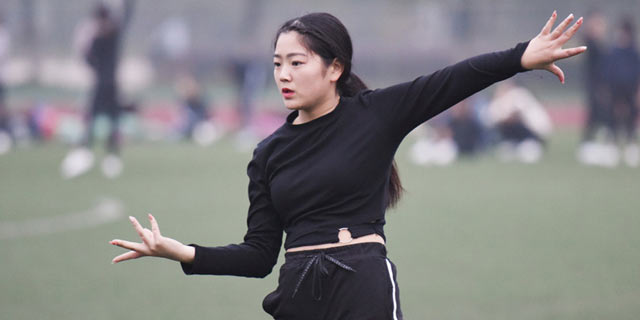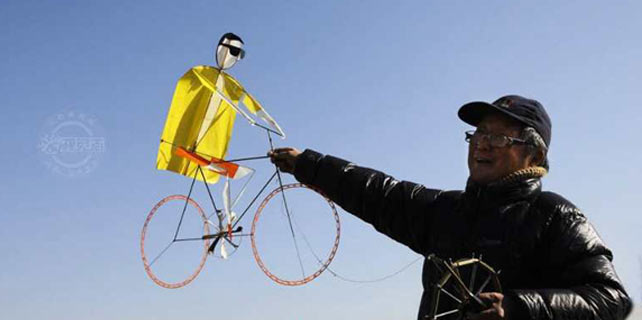China-US military exercise to enhance rescues
 |
|
Chinese and US troops perform a joint confined-space rescue operation at Camp Rilea Armed Forces Training Facility of the Oregon Army National Guard in Warrenton, Oregon. YIN BOGU / XINHUA |
It's a rare moment when you hear US soldiers shout commands in Chinese, and vice versa.
But at a military camp in Oregon, US and Chinese soldiers not only exchanged rescue methods but also commands during a joint exercise on humanitarian assistance and disaster relief.
Two teams of eight soldiers, four from each side, were tasked to set up two rope bridges to transfer "patients" across a river in a flood-based simulation.
Not far from the "flood" site, two groups of rescuers were performing a confined-space rescue operation at a "rubble pile".
"It's pretty fun, we teach each other some words. We had a lot of laughing," said Matthew Means, first lieutenant in charge of the simulated rescue operations.
The joint exercise between the Chinese and the US militaries, which was held from Thursday through Sunday at Camp Rilea Armed Forces Training Facility of the Oregon Army National Guard in Warrenton, Oregon, involved more than 200 people from both sides. Its goal was to improve response to natural disasters and deepen relations and cooperation between the sides.
"What we've learned is there are different methods to accomplish the same purpose. The PLA (People's Liberation Army) showed us different ways of tieing knots and setting up a rope bridge," said Means.
He said there were no better or worse methods. "One way might be faster but less stable; the other way might be more secure but slower," he said. "We can have the different methodologies in our toolbox to pull out when needed."
The US participants are from the US Army Pacific and the Chinese come from the PLA Southern Theater Command Army. To most of them, it's their first time participating in a joint exercise with another country.
This joint exercise is part of the consensus reached by President Xi Jinping and US President Donald Trump. It also is part of the exchange mechanism between the two militaries.
This year marks the fifth practical field exchange on humanitarian assistance and disaster relief between the two sides since the exchanges were established in 1997.
"It's helpful that we can come together with another country in case of emergency or disaster to accomplish humanitarian missions," said Means. "It broadened our horizons."
What impressed Mo Sihua, a Chinese first lieutenant working at the rubble pile, the most during the exercise was the "casualty collection point" tactic from his US counterparts, which is more efficient and flexible.
What also impressed him was the wild animals he saw at the camp and the local seafood the US soldiers brought them during the afternoon breaks.
"They (the US soldiers) are interested in learning Chinese from us, and they are pretty quick in picking up Chinese words," said Lei Yang, a deputy company commander.
"We learned a lot, too," he said. "The old Chinese saying has it that no skill is a burden."









